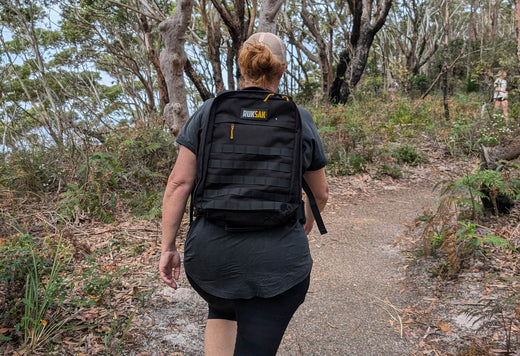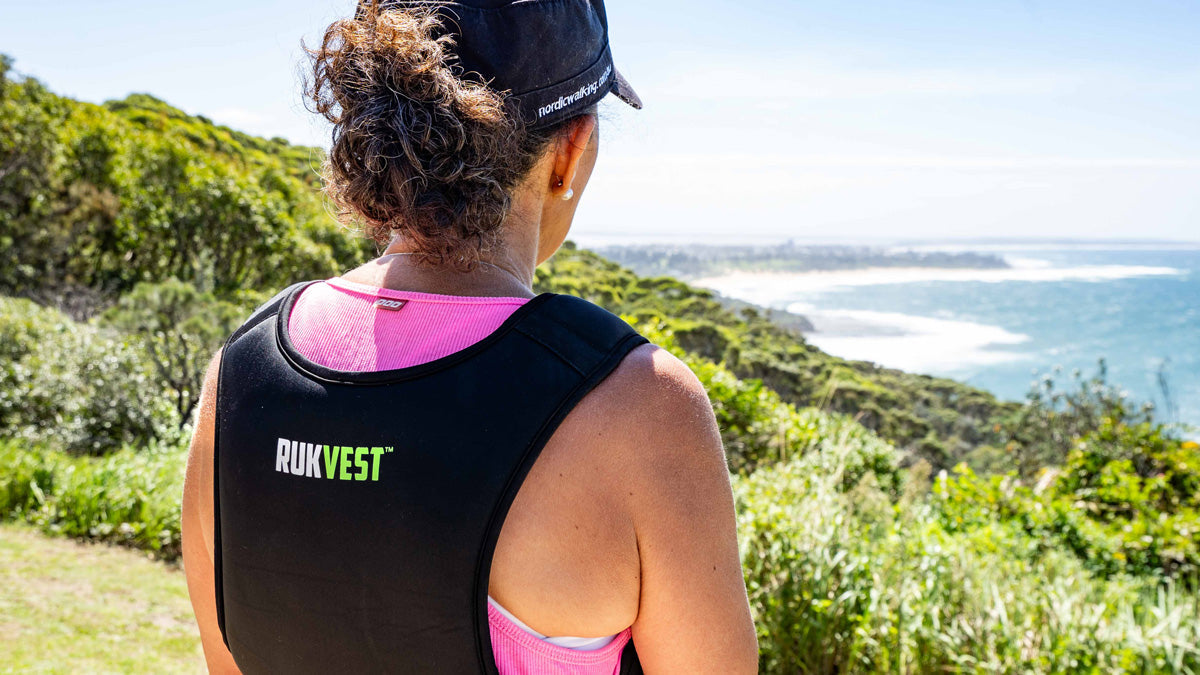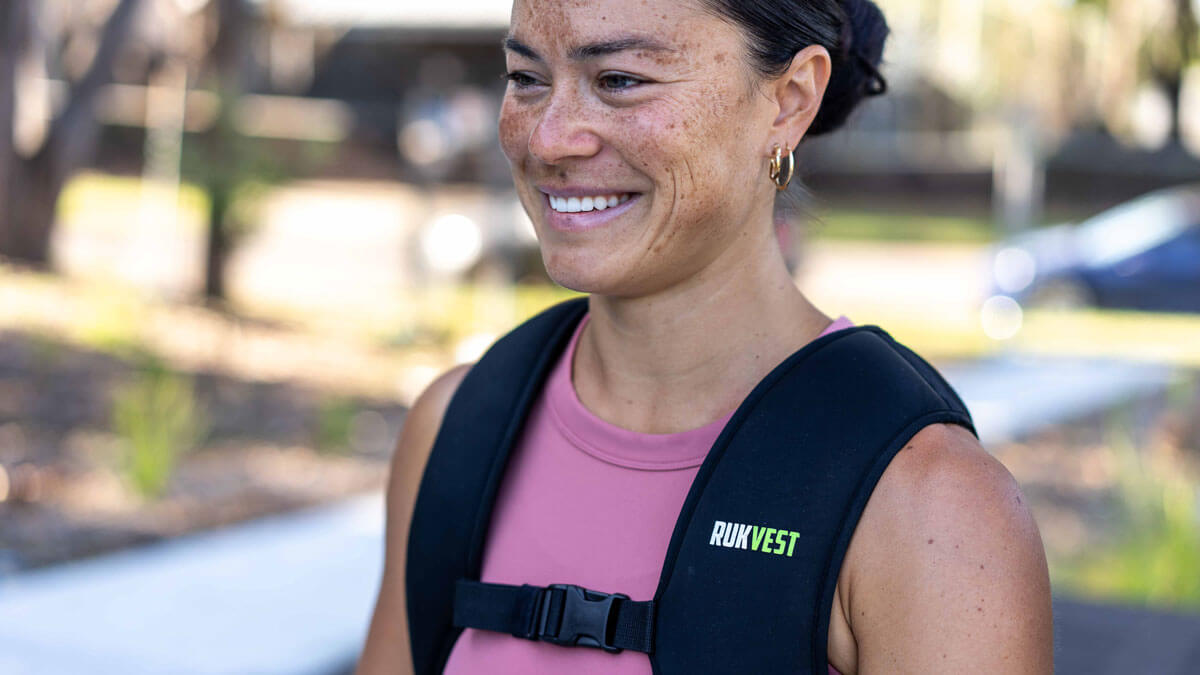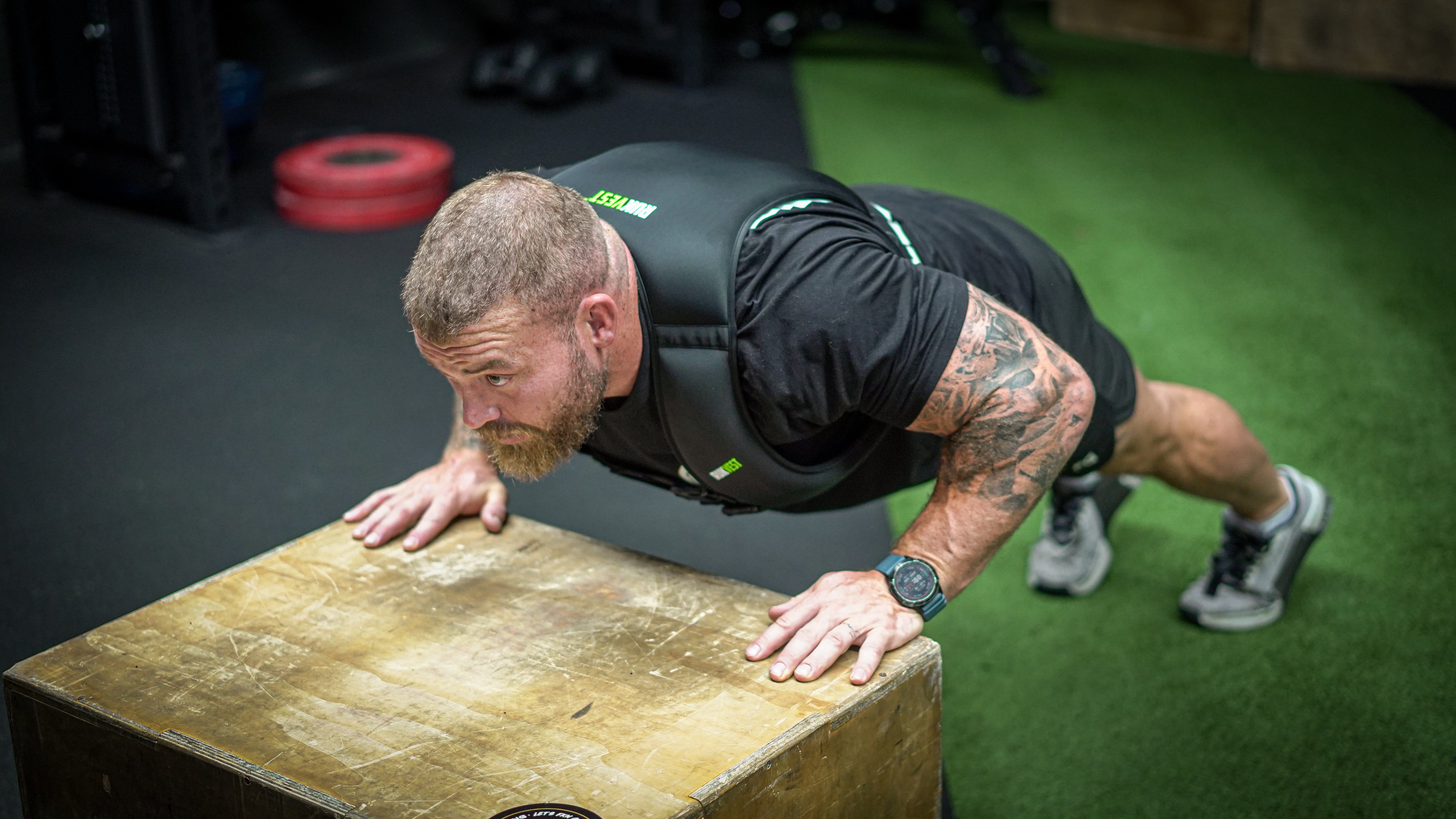Key Takeaways
- Start light, build gradually, and focus on comfort to stay injury-free and consistent.
- Use good shoes, a waist belt, and smart setup to make rucking easier and more enjoyable.
- Integrate rucking into daily life or travel—every weighted step counts.
- Keep it simple: walk, add weight, and just get moving.
1. Start Easy
Despite rucking being used in military training for decades, it has only recently started to become popular amongst civilians which means that most of us are relatively new to it.
And despite people worshipping the likes of David Goggins and wanting to ruck a marathon with 42kgs in their pack as soon as they get one… we suggest that you start out slow.
Most injuries when it comes to exercise are due to over work and doing too much too soon.
While rucking is probably one of the safest forms of exercise from an injury standpoint, it is no different.
So you want to start with less weight than you think you can do, for a lesser distance that you normally walk and then work your way up for both from there.
You don't want to get halfway through your ruck to realise you have bitten off more than you can chew, as having to dump weight during a ruck is not ideal, especially if you are using proper rucking gear.
Gradually increasing your weight and distance over time is the way to go to minimise injury and prevent any setbacks. Gauging how you feel after each and every ruck to know what's achievable the next time is a great strategy to help do this.
Easing in also makes it more enjoyable, which means you will want to do it more, which means your health will benefit from it long into the future.

2. Use a Waist Belt
Waist belts help with weight placement and comfort, especially as you start to increase the weight in your pack as your hips are generally stronger than your shoulders.
Having the ability to shift the weight between the shoulders and hips by adjusting the straps is great, especially on long rucks as it reduces fatigue and will allow you to ruck longer.
If you like to ruck with your dogs you can attach their leads to the waist belt and walk them hands free.

3. Feet: Comfort Matters
Adding weight to your body adds downward load pressure that ultimately ends up at your feet, so wear good shoes that are well fitted. Try the lace lock method for tying them to reduce unwanted foot movement within the shoe.
Also shoe selection helps here as well. A long ruck on pavement will be best suited for a comfortable soled runner like a Hoka versus a barefoot style shoe, and a trail shoe or hiking boot will be better for challenging bush hike.
Combine good quality shoes with good quality socks. People spend hundreds of dollars on shoes then skimp on the sock that connects their feet to the shoes.
Address hot spots before they become blisters (blisters are the #1 complaint of new ruckers).
4. Put the Pack on Safely
We have seen people injure themselves attempting to put on a heavy pack in a rush, usually when excited to try it for the first time. True story.
If your pack is heavy, or your are a little wiser but a less mobile than in your younger years, a good hack is to sit your ruck on a table in an upright position, then you can sit in front of it, place your arms through the straps and stand up ready to go.
By avoiding the awkward movement of having to sling it on to your back from the floor, you minimise the risk of shoulder and back injury … which can be one of those pesky injuries that can have you out of rucking for some time.
5. Make it Convenient
Human behaviour suggests that you are more likely to do something (and continue doing it) if it is easy and you don't need to think of it.
Tips like keeping your RUKVEST near the dog harness versus in a cupboard somewhere so you automatically grab it when doing daily walks with the dog.
Preparing your pack with your shoes and clothes the night before so you are ready with minimal fuss for a morning ruck is another great tip.
6. Have a Destination
Having a destination is a great tip to help you to ruck further and add some meaning to your movement. Even if it is to your fav coffee shop or to go somewhere to do something or meet someone. If you have a mission in mind you will tend to go further than if rucking nowhere in particular and until you feel like coming back.
7. Wear Your RUK at Home
Our RUKVEST customers know this tip well, but even our RUKSAK crew should consider the benefits of wearing their pack while at home, especially when they first get it.
Wearing a RUKSAK with smaller weights while doing the everyday chores like mowing lawns or cleaning up the house will help you get used to moving with the weight.
This should make life more comfortable when taking on a meaningful ruck while carrying meaningful weight.
The added benefit here is the health benefits you will get while doing the everyday movements with some weight on your back.
8. All Movement Counts
Get creative with where you wear your weighted vest or pack as almost everything you do can be done while weighted … and every weighted step counts.
Walking the kids to school or the bus stop, commuting to work, walking the dogs, doing the grocery shopping. Rucking doesn’t need a designated time slot, just a bit of forward planning as to how you can make your existing movement more meaningful.
We are all so busy and getting busier with each year that passes, so rucking is the perfect tool for time poor people. Plus being a pack, it is a useful utility to replace purses, backpacks, laptop bags etc without much thought.
9. Fitness That Travels
Rucking is a great exercise modality for travellers. Whether you check in or carry on your weighted vest or pack, you can easily ruck anywhere you decide to travel to.
If you decide to carry on, being able to ruck around the terminal is a great time burner and good for getting in some steps prior to being forced to sit the length of your flight.
Once you get to the destination, there is no better way to explore a new region than on foot.

10. Consider Hiking Poles

Lets start by saying that using poles is not cheating.
Runners competing in world class running events can legally use poles, and they are a great tool, particularly when rucking trails where you can go longer and faster up hills while improving balance on varied terrain.
But a little-known fact is that by using poles when you ruck, you actually turn an activity that normally isolates the core and lower limbs, into a full body workout.
The motion of using your arms to hold the poles and help propel you forward while carrying weight delivers a workout like no other ruck will deliver.
You may look a little out of place through a city (but who cares what others thing … right?), but in the bush you will look right at home, so get in nature and try out some poles on your next ruck (read more about the benefits here).
11. Don’t Forget to Stretch
Despite it just being a form of walking, which most would not consider stretching for, having a pre and post ruck stretch may be beneficial to help with long term mobility and injury prevention.
Warm up the shoulders and back before putting the ruck on is beneficial, once the ruck is on then look to warm up the hip flexors, hamstrings, knees and ankles as this can help eliminate any discomfort, particularly on longer, harder rucks.
When you are finished, take some time to stretch your neck, back and legs to reduce any post ruck stiffness.

12. Keep It Simple
Don’t overthink it, the joy of rucking is its simplicity … it is just walking while carrying weight, the more you try and overcomplicate it the less enjoyable it becomes and the less you will want to do it.
Not every ruck needs to be an epic adventure into the wilderness or in perfect weather, you don't even wait until you can afford the good gear… just throw some weight into an old backpack, then pop on your shoes and get out the door.
Rucking is the most accessible form of exercise as you already have what you need. If you can walk, you can walk with weight, and that my friend is rucking.
Don't let perfection get in the way of getting started!









Share:
Rucking safely during and after pregnancy
Adding Life to Your Years: 7 Tips for a Healthier, More Fulfilling Life (and how Rucking can help).